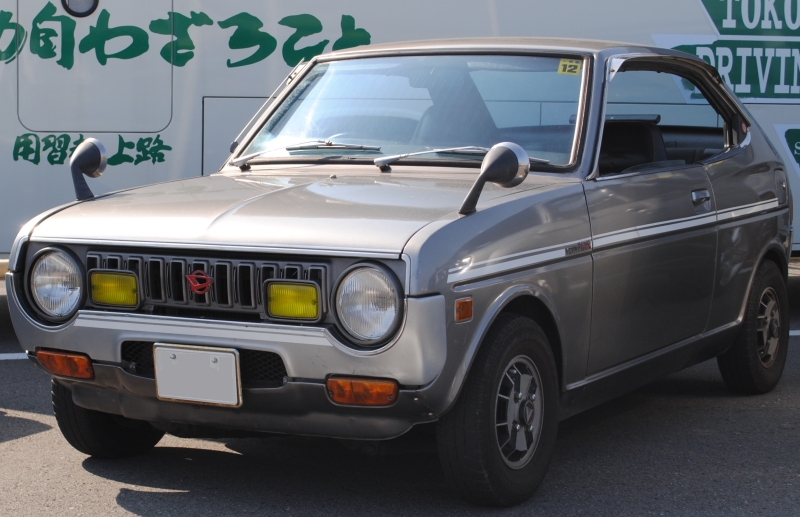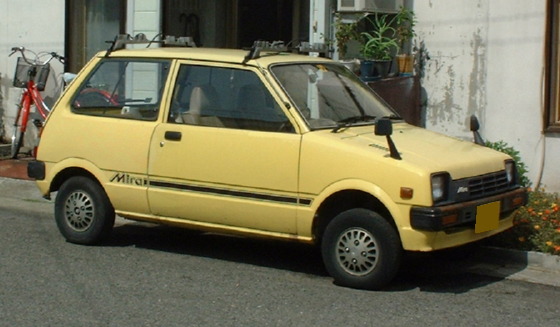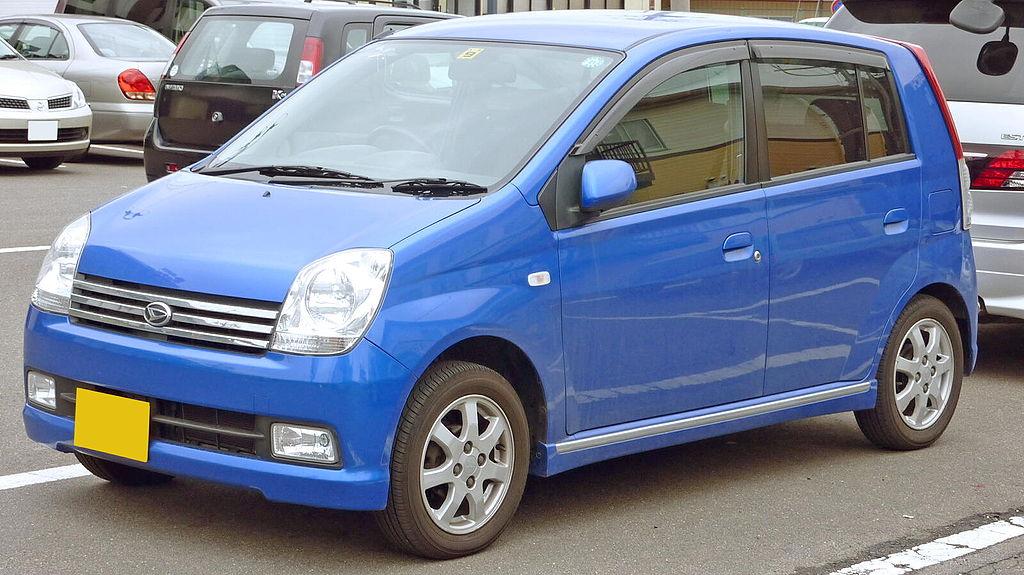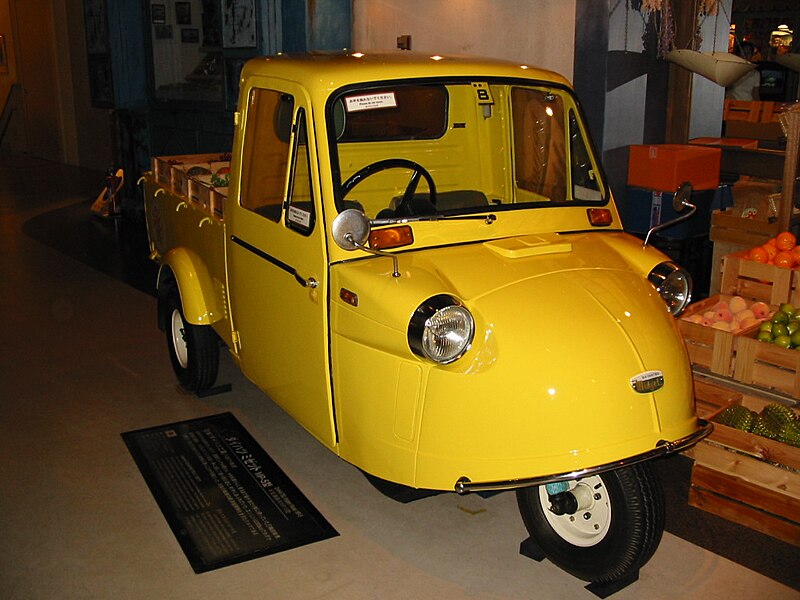Cony Guppy
The Cony Guppy is a small pickup truck manufactured by Aichi. The vehicle had suicide doors and siren-like lights on the B-pillar. The brake lights were tiny and circular.The engine, which rests behind the seats is a 2 valve 199 cc single cylinder that produces 11 horsepower, which can power the vehicle to its top speed of 50 mph. Aichi rated the Guppy's fuel economy at 50 km/l.They also claimed the Guppy is able to carry 100 kilograms of cargo. Its low price of ¥225,000 made it attractive to small business owners and cargo transporters. Other features include a 4-wheel independent suspension and a torque converter for clutchless driving.
Daihatsu Bee
Although Daihatsu had been producing motorized tricycles for carrying freight since 1930, and had also produced a small car for military use in 1937, the Bee was the first passenger car the company built for sale to the general public. The car was marketed from October 1951, shortly before the company changed its name from 'Hatsudoki Seizo Co' to Daihatsu. The Bee's model code is PCA.
The car had a two-door fibreglass, saloon body, and was popular as a taxi in Japan where licensing regulations permitted a lower charge per mile for three wheel vehicles than for four. Power was provided by a rear-mounted 540 cc OHV air-cooled two-cylinder four-stroke engine. It was the first car in Japan with a horizontally opposed engine. The car was adapted from one of Daihatsu's three-wheeled delivery trucks. It sold very poorly, production was highly labor-intensive and ceased after only approximately 300 units were built.
Daihatsu Fellow Max
The Daihatsu Fellow Max is a small Japanese automobile in the Kei car class. Originally introduced as the Daihatsu Fellow, the name was partially retained for the Max Cuore (1977) and then again for the 2000 Daihatsu Max.
Fellow
Fellow Max
550cc
Max Cuore
2000s
Daihatsu Mira
The Daihatsu Mira (also known as the Cuore, Domino, and more recently Charade), is a kei car-type vehicle built by the Japanese car maker Daihatsu. It comes with a variety of options and chassis variations, with the latest variant having four models: "Mira", "Mira AVY", "Mira Gino" and "Mira VAN". The Mira is the latest successor to the line of cars begun with the Daihatsu Fellow of 1966 and was originally introduced as the commercial version of the Cuore. Outside Japan, the Mira has also been offered with an 850 cc or 1000cc engine. In Australia, the two-seater version was marketed as the Daihatsu Handivan and later as the Daihatsu Handi. The name "mira" is Latin meaning "goal" or "purpose."
L55/L60 series (1980)
L70/L80 series (1985)
L200 series (1990)
L500 series (1994)
L700 series (1998)
L250 series (2002)
L275 series (2006)
Daihatsu Midget
The Daihatsu Midget is a single-seater mini-truck, later a microvan/kei truck made by Japanese automaker Daihatsu. Several distinct vehicles have borne the Midget name over the years, but all have had in common a single or two-seat utilitarian design, with an enclosed or semi-enclosed cab.
First generation (1957–1972)
Second generation (1996–2002)
Fuji Cabin
The Fuji Cabin is a three-wheeled microcar produced by Fuji Toshuda Motors of Tokyo, Japan, from 1957 until 1958. It was introduced at the Tokyo Motor Show in 1955. The car has two front wheels and one rear. Its two-seater body, with a distinctive single headlamp, is constructed of fibreglass.
The Cabin is powered by an air-cooled single-cylinder 2-stroke 121.7 cc (7.43 cu in) Gasuden engine, producing 5.5 bhp (4.1 kW) and giving the car a top speed of 37 mph (60 km/h).
Despite being one of the most successful cars of its type in Japan's post-Second World War automobile market, only 85 units were built, partly because of the relatively poor quality of its fibreglass body and partly because of its relatively high price




.JPG/800px-Daihatsu_Fellow_(L37).JPG)






_van_(2011-11-08)_01.jpg/1024px-1991_Daihatsu_Mira_(L201)_van_(2011-11-08)_01.jpg)

.jpg/1024px-1999_Daihatsu_Mira_LS_(New_Zealand).jpg)









.jfif)

No comments:
Post a Comment